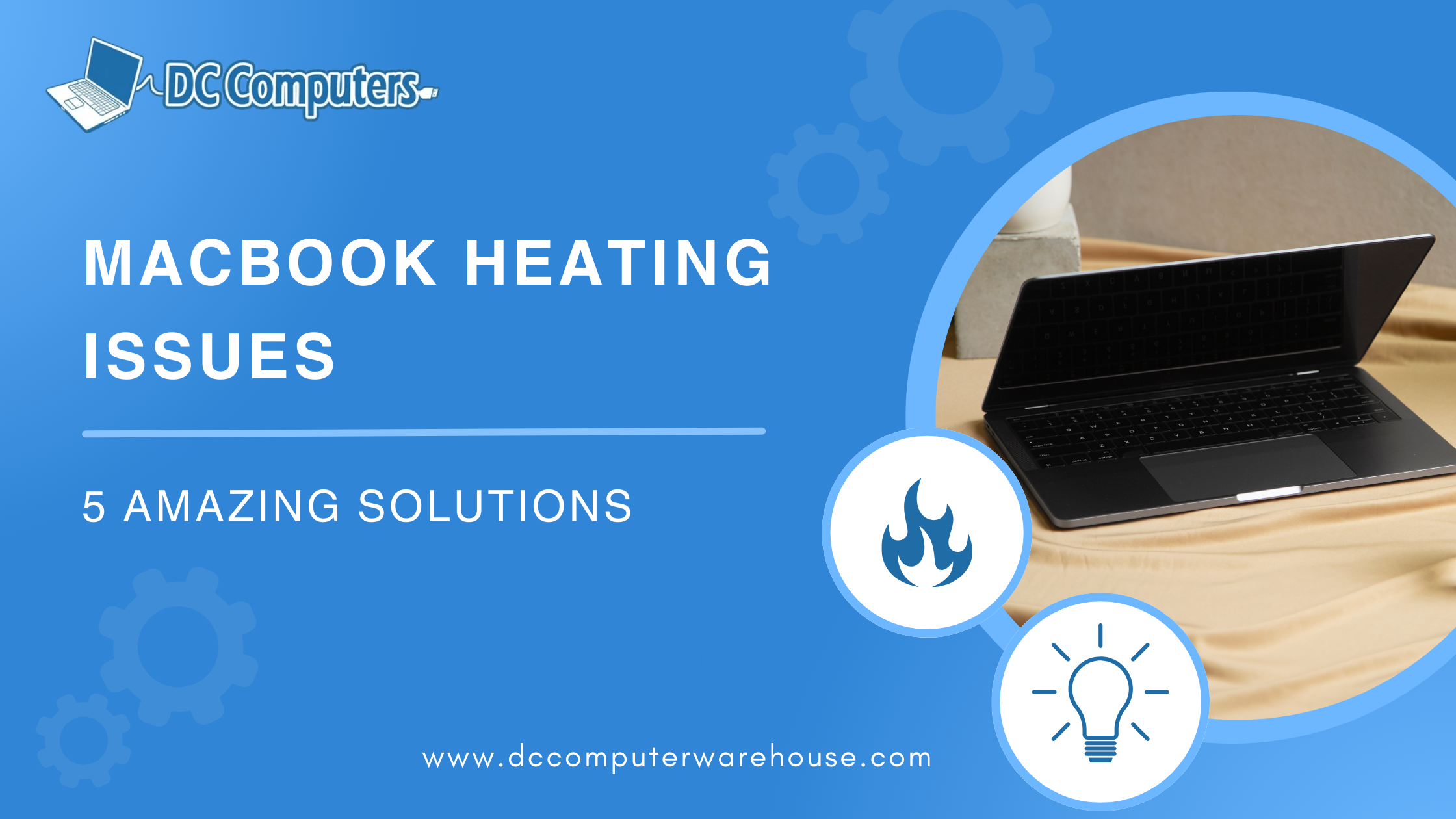You are in love with the sleek elegance of the MacBook- a device that is an incredible combination of power and style. Many prefer using MacBooks for its fast performance and exceptional operations. In addition, these Apple devices have very sophisticated cooling systems designed to ensure you don’t face overheating issues.
However, at some point, you might experience heating issues with your MacBook, especially in the summer. You might often just experience symptoms of an overheating MacBook, but in rare cases, an overheating device can also cause physical damage.
So, seeking professional Macbook repair San Diego service is recommended to get your overheated MacBook repaired to prevent further hardware damage.
This article discusses why MacBook gets overheated in the first place and how you can fix the MacBook heating issues.
Why Does a MacBook Get So Hot?
Some of the reasons why a MacBook gets so hot are as follows:
Too much stress on the CPU
The harder your MacBook’s processor cores work, the more likely they will heat up; thus, your device will get overheated. When using your MacBook, you might notice the device getting slower when opening a browser and any application, such as a video editing app.
It happens because such apps usually run many processes, using up your device’s maximum processing capability and making it struggle, which causes overheating.
High ambient temperature
MacBooks are designed to handle various temperature limits. However, continuous exposure of your MacBook to extremely high temperatures can harm your device.
It’s why computer service San Diego experts recommend using MacBooks in temperatures between 50 and 95 F (10 and 35 C). In addition, placing your MacBook under direct sunlight can shorten its life and cause internal damage.
Clogged or blocked fans
You love to use your MacBook in bed, but your cozy, warm blanket can be one of the significant causes for your device running hot.
The vents installed at the back of the MacBook, at least in the Macs with fans, blow warm air away from the components inside the laptop case.
If these vents are clogged or blocked, they won’t be able to blow off the warm air when the fans kick in, overheating your MacBook.
Frozen or unresponsive apps
The applications you use might freeze or misbehave at a point in time, making those spinning wheels appear on your MacBook.
However, even if any app is unresponsive, it still consumes the laptop’s memory. Whenever there’s a frozen or laggy application, the MacBook uses a lot of CPU resources to fix it, which, in turn, overheats its processor.
It is recommended that you connect with a reputed Macbook repair San Diego to get your PC checked and repaired correctly.
Malware
It can be challenging to spot malware on a MacBook. Until they aren’t spotted, the malware runs a tone of intensive processes hiddenly, making the device heat up.
Some common threats on MacBook include adware, backdoors, and browser hijackers. So, if you feel your MacBook is heating up for no reason, check it for undetected malware.
How Can You Fix Your MacBook Heating Issues?
If your MacBook is getting extremely hot, a Macbook repair San Diego professional recommends following the below-given solutions depending on the causes of overheating:
Check your CPU usage and uninstall resource-intensive apps
If your MacBook is overheating, the first thing you should check is the CPU usage. To check your device’s CPU load, you can use Activity Monitor.
Go to Activity Monitor (Finder > Applications > Utilities) and tap on the CPU tab. Now, you can see all the apps and processes your MacBook uses, from the most intensive to the least CPU-heavy apps.
It’s wise to uninstall the intensive apps and processes to reduce the CPU load and prevent your MacBook from overheating. To do so, select the app or process you want to delete and click the X button. Finally, confirm to quit the app or process.
Give your MacBook some breathing room
Your MacBook might suffocate when using it under the blanket or due to the pressure of too many tasks. Just like humans need fresh air to survive, your MacBook also craves proper ventilation.
You can prevent your MacBook from overheating by ensuring it has enough space around it for fans and vents to blow off warm air freely.
Avoid using the device on soft surfaces like couches or beds, as they block the airflow vents. Instead, using the MacBook on a flat, hard surface like a desk or laptop cooling pad will be best.
Keep the device clean and green
Dust and dirt can accumulate in the MacBook’s fans and vents over time, disrupting the airflow and overheating it. You should regularly seek a professional Computer service San Diego to get your laptop cleaned.
Such experts can blow away the dust particles from your device using compressed air and solve your MacBook heating issue.
Close browser tabs you are not using
Many open browser tabs can create an unnecessary load on your MacBook. Each open tab uses the device’s memory and consumes CPU resources.
So, the more tabs you open, the more CBD energy and resources will be consumed, overheating your laptop. Close down the tabs you don’t use, and instead, you can bookmark the web pages to prevent your device from overheating.
Update all the things
Software updates are not only about new features, but they also involve enhancing performance and thermal management. It will help if you keep your MacOS updated to fix your laptop’s heating issue.
Regular updates can optimize how your MacBook handles all tasks, potentially reducing the heat it generates. In addition, updating your applications as outdated software can sometimes unnecessarily pressurize your system.
Summing up it all!
Many things can overheat your MacBook, from frozen applications pushing the CPU too hard to malware attacks and blocked fans or vents.
Whether you invested in the used computers San Diego or bought a new MacBook, you should take all precautions to prevent your device from getting overheated.
However, if your MacBook still heats up, consider following any of the above-discussed solutions, depending on the cause of overheating. You should seek professional help to fix your MacBook’s overheating issue to prevent it from any further damage.




